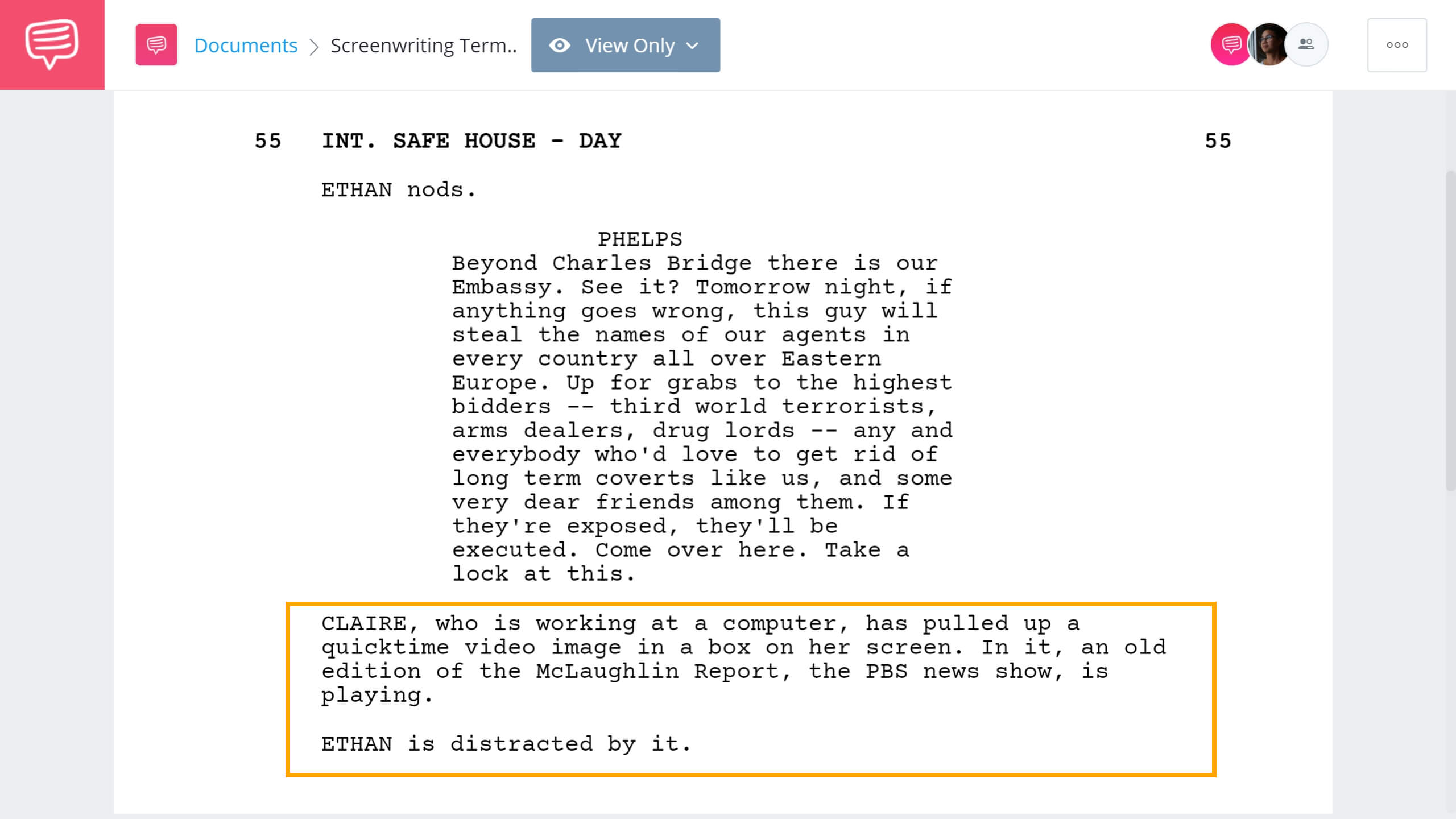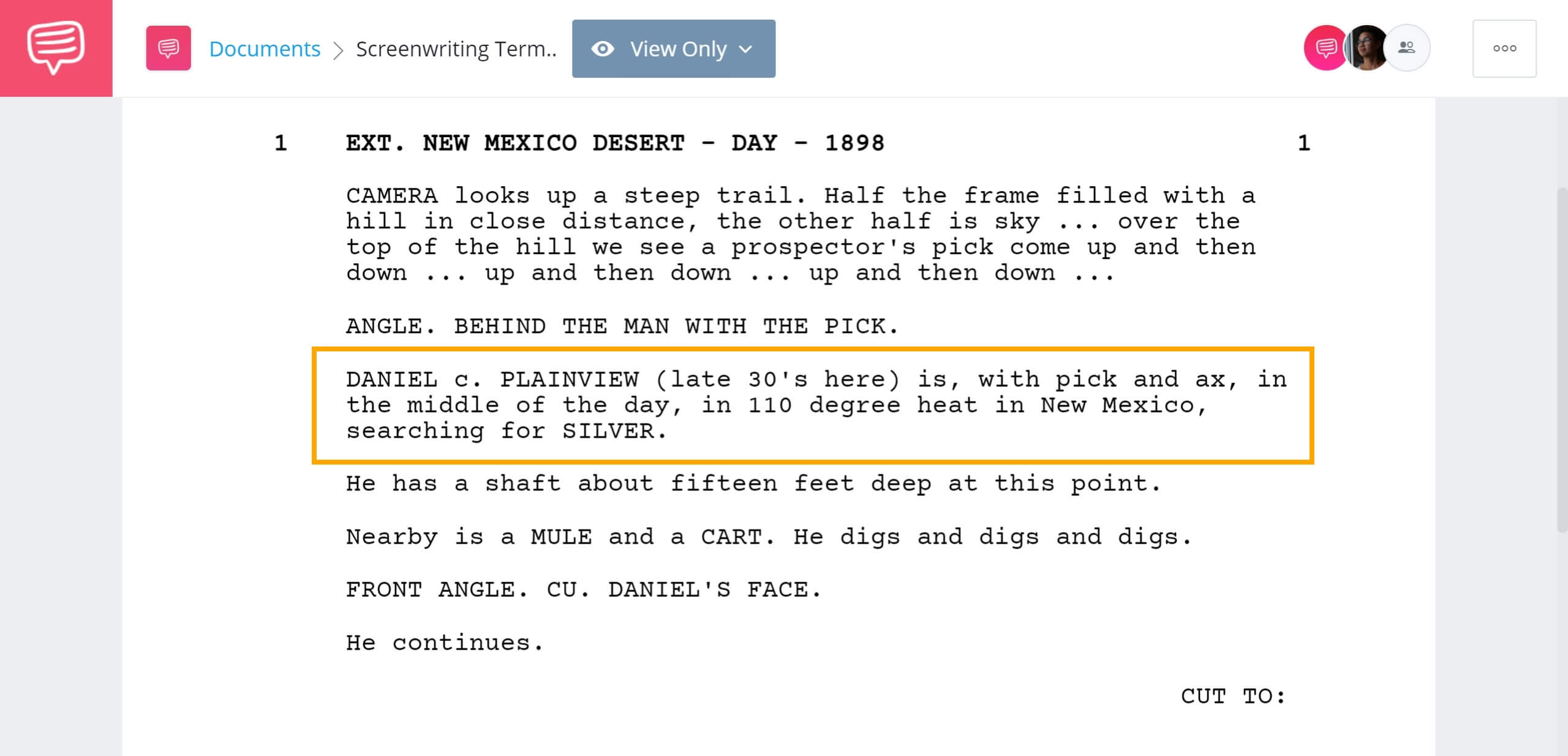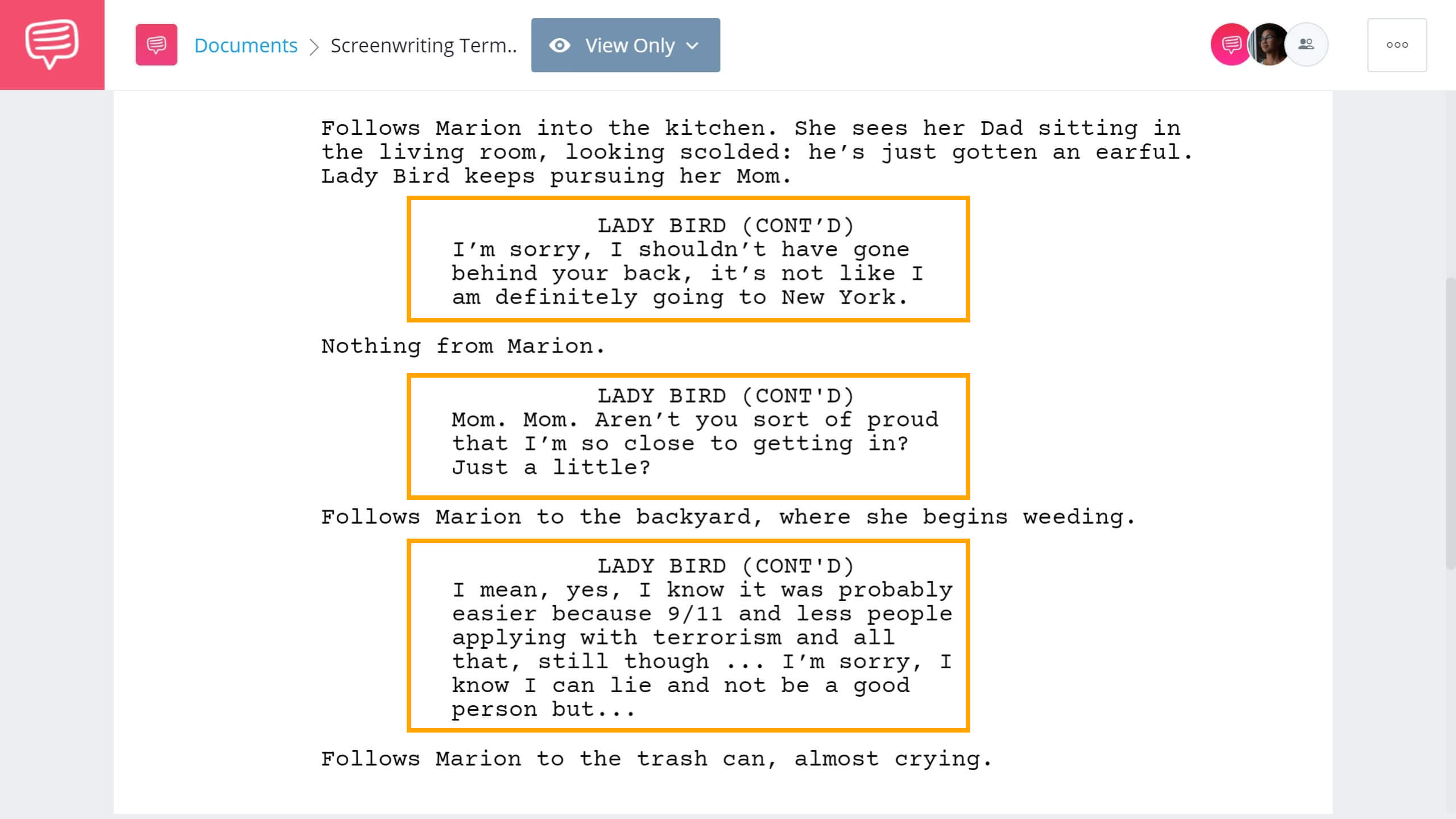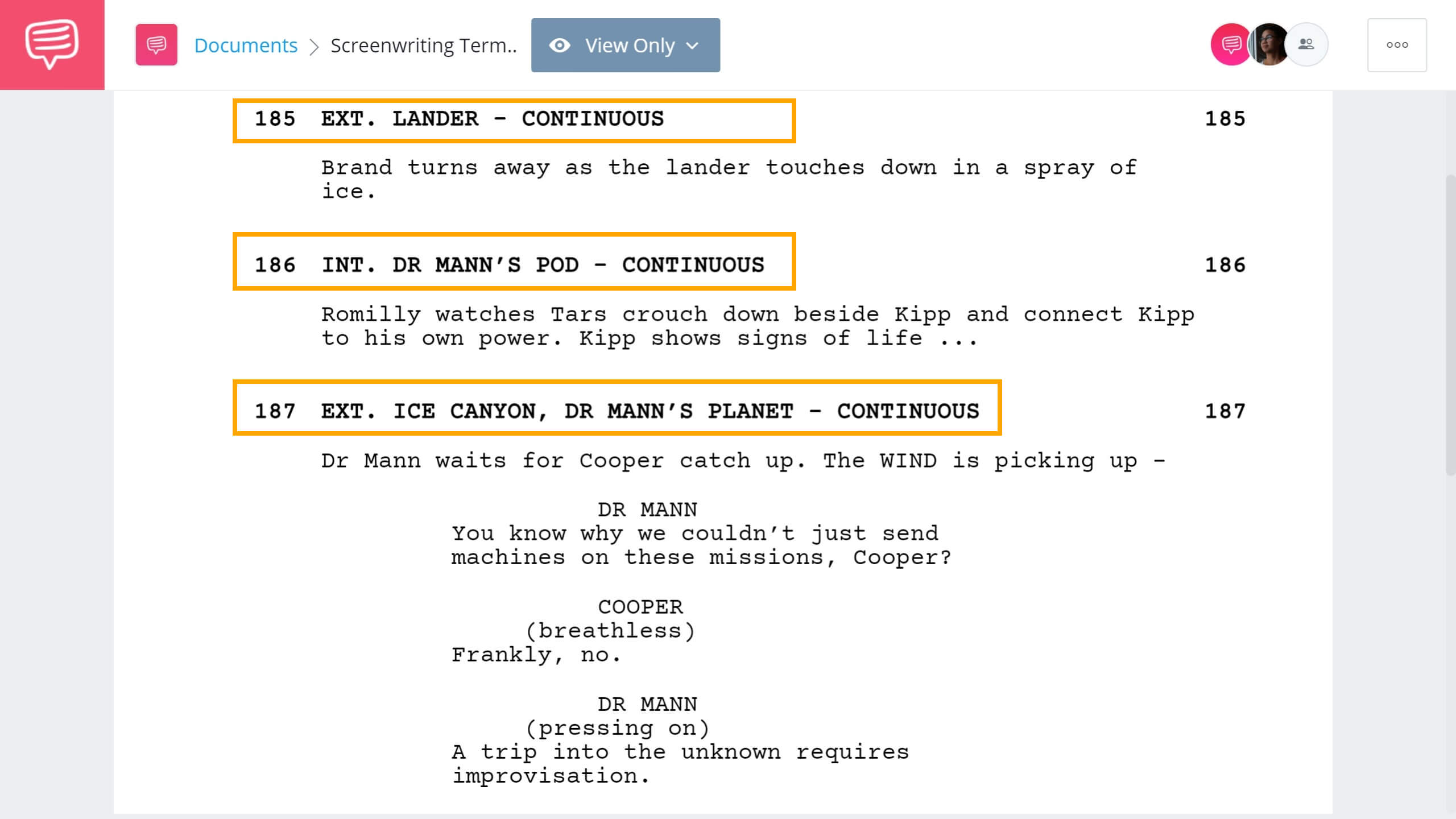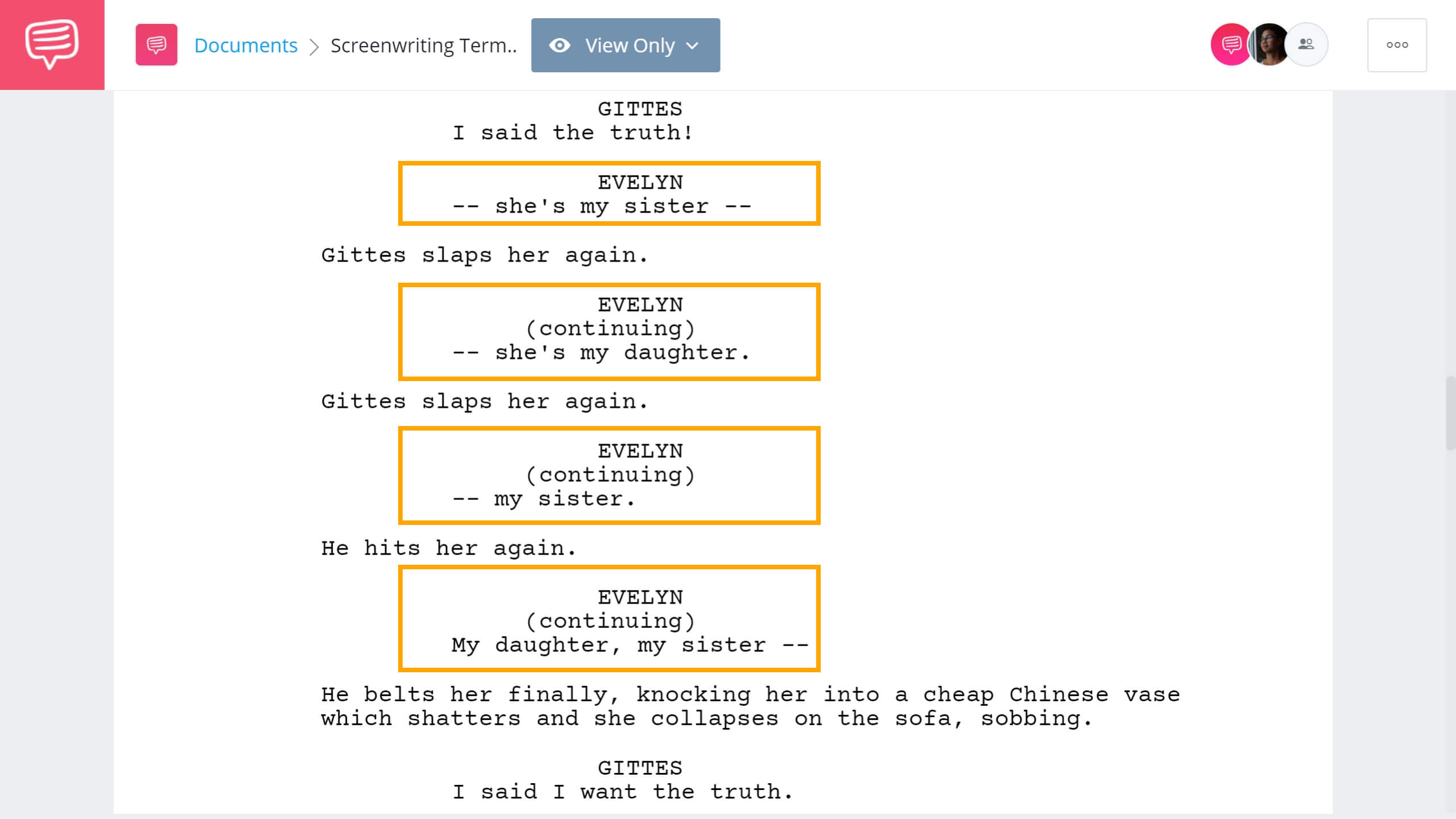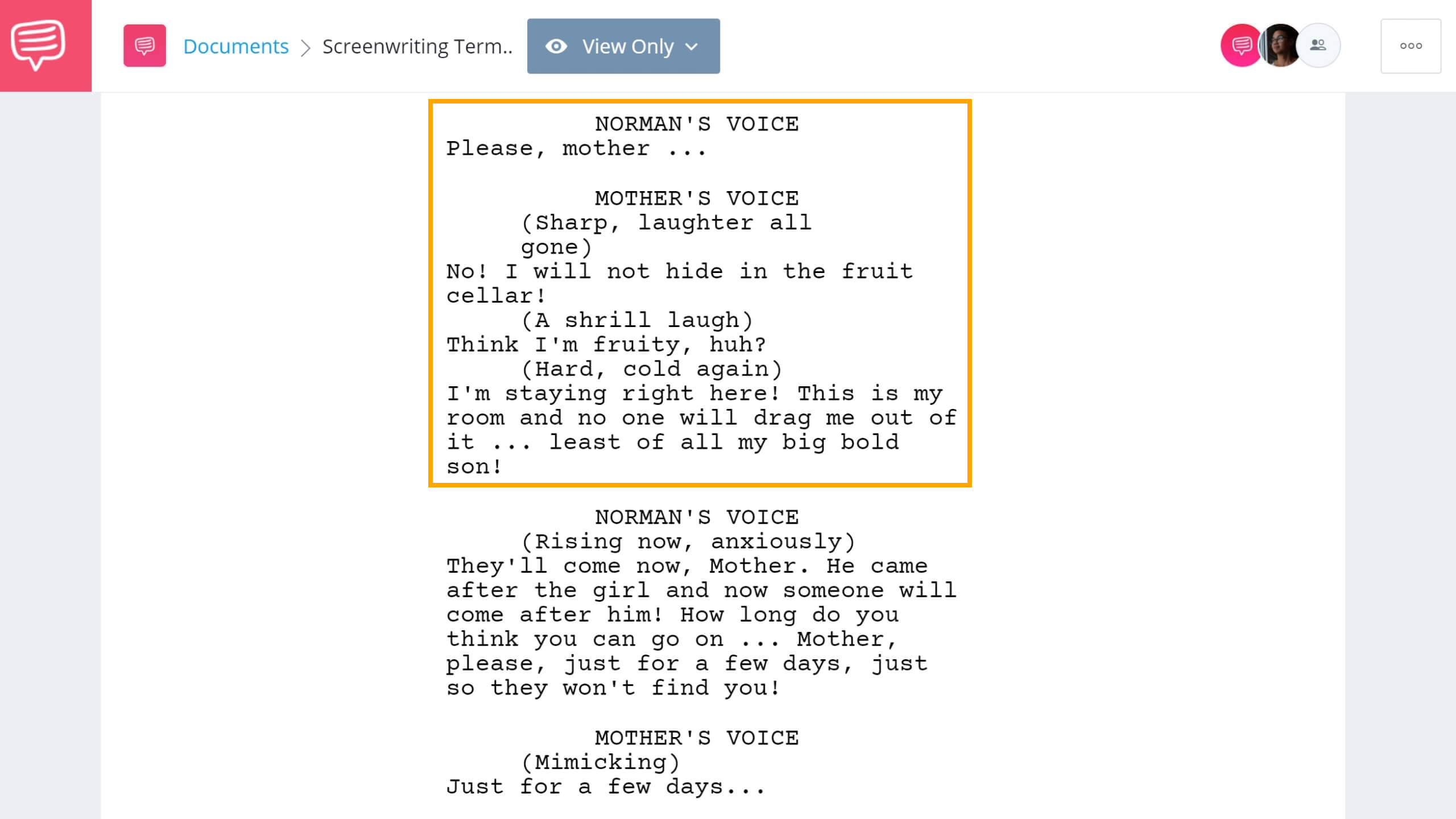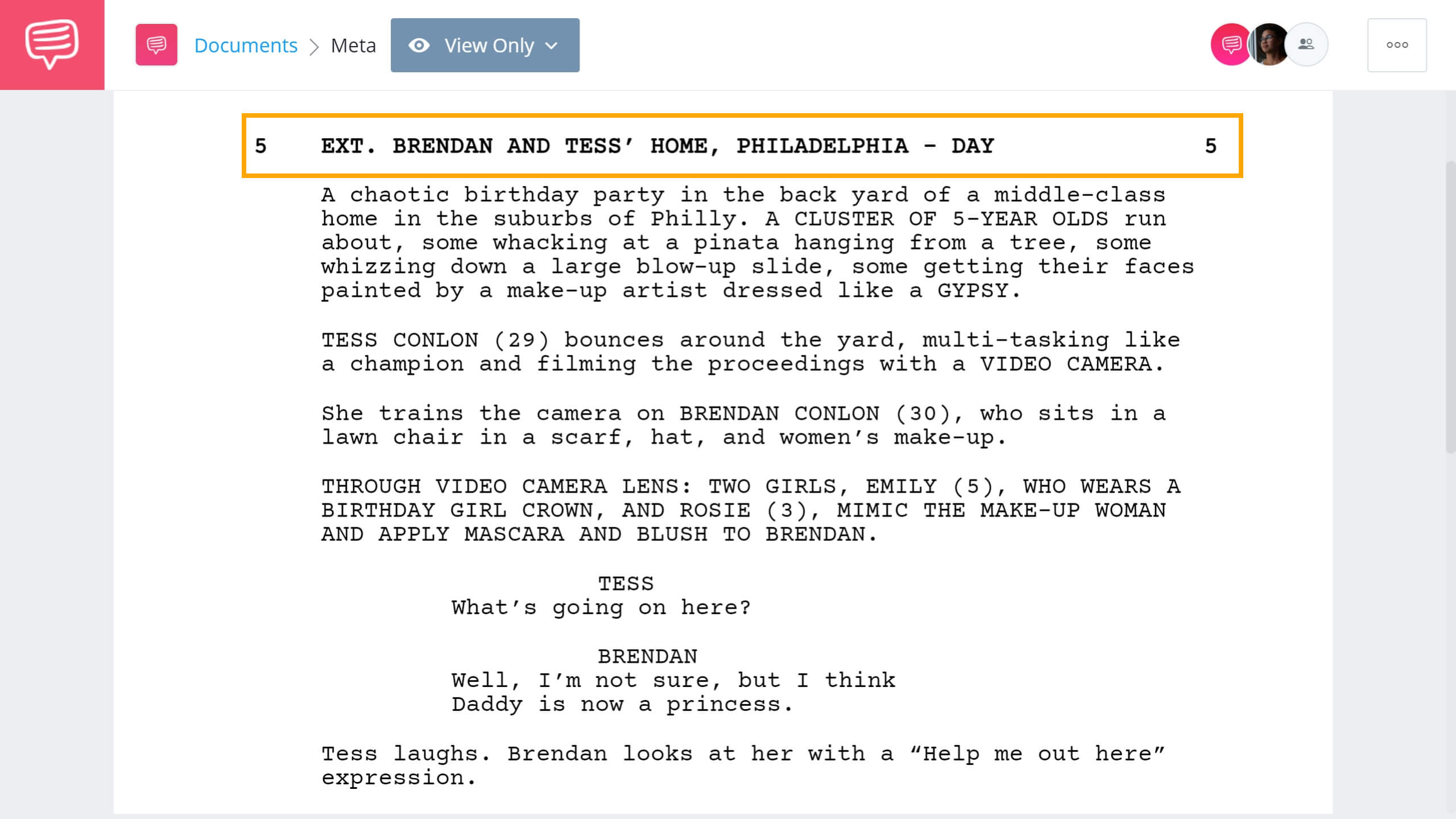There are a lot of intricacies in scripts that present challenges to even the most veteran of screenwriters. The process of writing a script is difficult enough but the vocabulary, abbreviations, and defintions related to the job can be a bit elusive. But don’t worry, we’re going to cover a variety of screenwriting terms that every screenwriter needs to know. By the end, you’ll be ready to apply a variety of screenwriting techniques to your own script.
Watch: Anatomy of a Screenplay
Screenplay Terms and Abbreviations
Note on screenwriting terms
This article is separated into two sections: screenplay terms and shooting script terms. The former includes all of the terms you need to know if you’re planning on writing a spec script or you’re planning on passing the script off to a director. The latter includes all of the terms you need to know to turn the screenplay into an actionable production.
With that note out of the way, let’s jump into some screenwriting terms!
Screenwriting Terms • How to Format a Screenplay • Subscribe on YouTube
Glossary of Screenwriting Terms
Action
Action refers to any time something happens outside of dialogue. For example: if two characters are having a conversation, then one drops their drink, the action would read: “so-and-so drops their drink.”
This “action” example is taken from the Mission: Impossible screenplay:
Script Vocabulary • Action Examples in ‘Mission: Impossible’
Screenwriting Terms and Definitions
Beat
A story beat is a structural element of a narrative that’s meant to mark a story-pause or a shift in tone. Story beats are written into screenplays as “BEAT” or “A BEAT” either inside a parenthetical or outside of dialogue.
Blake Snyder’s Save the Cat! template shows us how to break down scripts into 15 narrative beats. Check out our video essay on the 15 key story beats in Avengers: Infinity War below:
Terms in Screenwriting • Story Beats in ‘Avengers: Infinity War’ • Subscribe on YouTube
Screenplay Terms and Abbreviations
Character
This character introduction example is taken from one of Paul Thomas Anderson’s best movies: There Will Be Blood:
Screenwriting Terms • Character Introduction Examples in ‘There Will Be Blood’
A character is a subject within a story. When introducing a character in a screenplay, the character names are written in ALL CAPS. Some writers elect to use capitalized names for the entire script but, traditionally, this is only done the first time the character appears.
Script Writing Abbreviations
(CONT’D)
(CONT’D) is an abbreviation of “continued” and it's used to suggest that a character is still speaking regardless of the action going on around them. So whenever a character is speaking and an action occurs, if no other character speaks before them, then their next line of dialogue should have (CONT’D) next to their name.
This (CONT’D) example is taken from Greta Gerwig’s Lady Bird screenplay:
Screenplay Abbreviations • (CONT’D) Examples in ‘Lady Bird’
Screenwriting Language Explained
CONTINUOUS
“Continuous” may sound like “continued” but it means something very different in screenwriting. CONTINUOUS is used when action moves from one location to another; for example internal to external, without any gap in time.
This “CONTINUOUS” example is taken from the Nolan brothers’ space-bending epic Interstellar:
Screenwriting Terms • CONTINUOUS Examples in ‘Interstellar’
Glossary of Screenwriting Terms
Dash
Dashes are used in and out of dialogue to suggest that someone or something is being interrupted before they’re finished. Dashes can also be used stylistically to generate flow.
This “dash” example is taken from an iconic scene in Robert Towne’s Chinatown screenplay:
Screenwriting Terms • Dash examples in ‘Chinatown’
Screenwriting Terms and Definitions
Dialogue
Dialogue is a conversation between two or more characters. The term is derived from the Greek dialogos (conversation); rooted in dia (through) and logos (speech, reason).
This video from Nerdwriter1 breaks down “what realistic film dialogue sounds like” by analyzing Noah Baumbach’s The Meyerowitz Stories.
Screenwriting Terms • What Realistic Film Dialogue Sounds Like
Screenplay Abbreviations List
Ellipsis
Ellipses, or dot-dot-dots, are used to communicate a trailing thought in dialogue. As opposed to dashes, ellipses imply that there should be a pause before the next action or spoken line of dialogue.
This example is taken from one of Alfred Hitchcock’s best movies: Psycho:
Screenplay Terms • Ellipses Examples in ‘Psycho’
Screenwriting Language Explained
Flashback
A flashback is when a story goes back in time to reveal a key moment that’s needed to explain current events. When considering writing a flashback in a screenplay, just make sure that the detour ties directly to the plot, characters, or themes of the story.
This flashback is taken from The Godfather: Part II when Michael reflects back on a pivotal moment in his life.
Screenplay Terms • Flashback Examples in The Godfather: Part II
Script Writing Abbreviations
INT.
INT. stands for interior; or when any shot takes place inside. Either INT. or EXT. is always used in a slugline.
This (interior) example is taken from the Warrior screenplay:
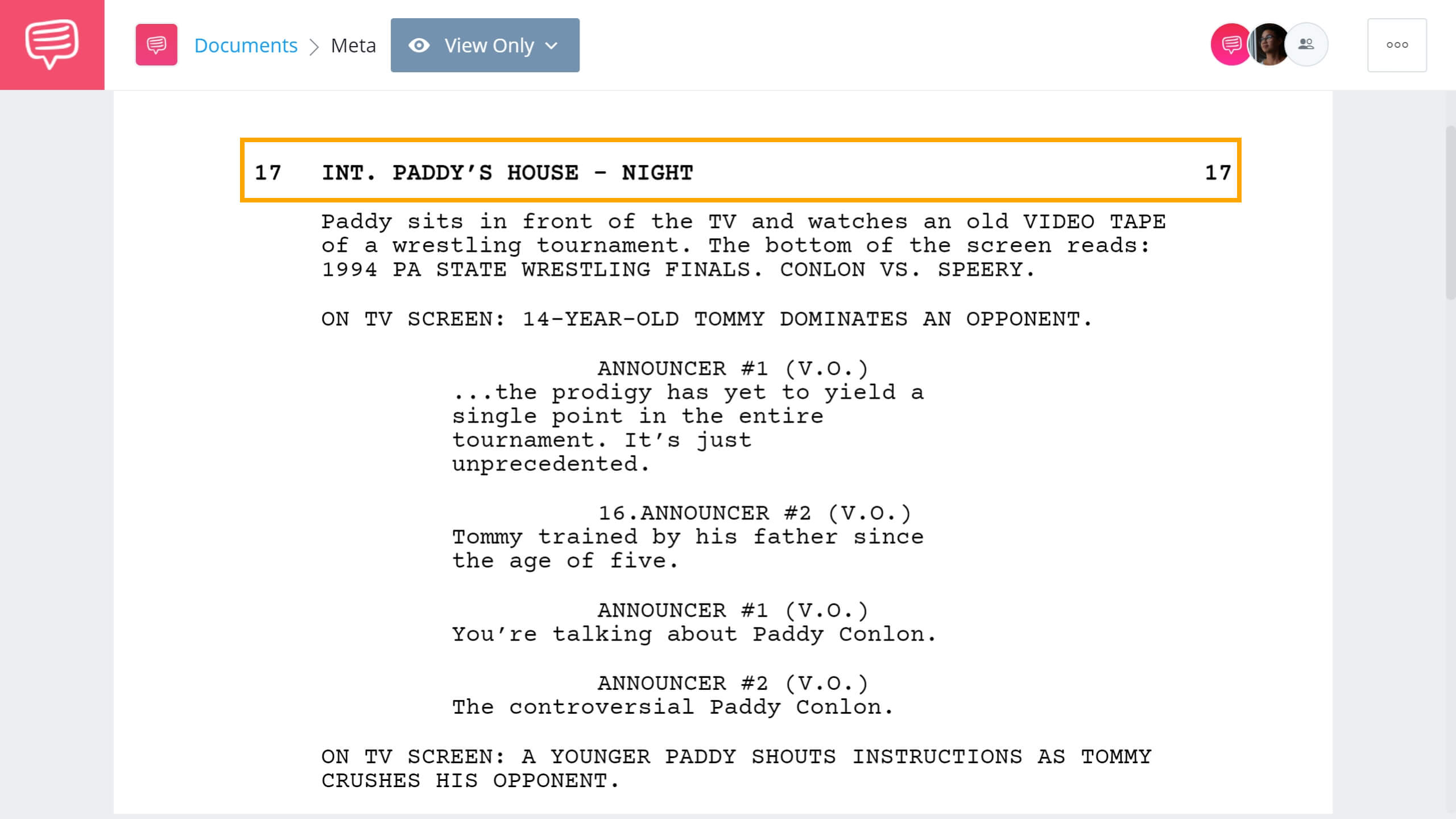
Screenplay Abbreviations • EXT. Example from ‘Warrior’
Screenwriting Terms and Definitions
Monologue
A monologue is a long speech made by one character, usually in front of an audience.
This monologue example is taken from one of Quentin Tarantino’s best films: Pulp Fiction when Jules (Samuel L. Jackson) commands the scene with a solo.
Screenplay Terms • Monologue in Pulp Fiction
Script Terms and Abbreviations
(MORE)
(MORE) is used when a character is speaking but you run out of room before the end of the page. So whenever you write dialogue and there isn’t enough room to finish a block, add (MORE) at the bottom of the page, then create a new block with the character’s name and (CONT’D).
Screenwriting Language Explained
Parenthetical
A parenthetical is a character direction that is interwoven into dialogue. Parentheticals are often used to communicate character emotion, for example if you want to communicate shock, you may write (bewildered) before a line of dialogue. Parentheticals are also used to communicate quick, decisive actions, such as (punches wall).
Screenplay Terms and Abbreviations
Slugline
In simplest terms, a slugline is a scene heading. Sluglines are used on a shot-by-shot basis to communicate location and time of day. They can also be used as sub-headers to indicate an action, shift in perspective, and other creative ways to write sluglines.
Here’s a simple slugline example:



Script Writing Lingo • Slugline Example
Script Writing Abbreviations
(O.S.)
(O.S.) refers to an offscreen voice. For example, say a character begins a scene on screen having a conversation with their spouse in the bedroom, then they continue talking while brushing their teeth in the bathroom. When the character goes offscreen, their dialogue must be marked with (O.S.).
This (O.S.) example is taken from Noah Baumbach’s Marriage Story:
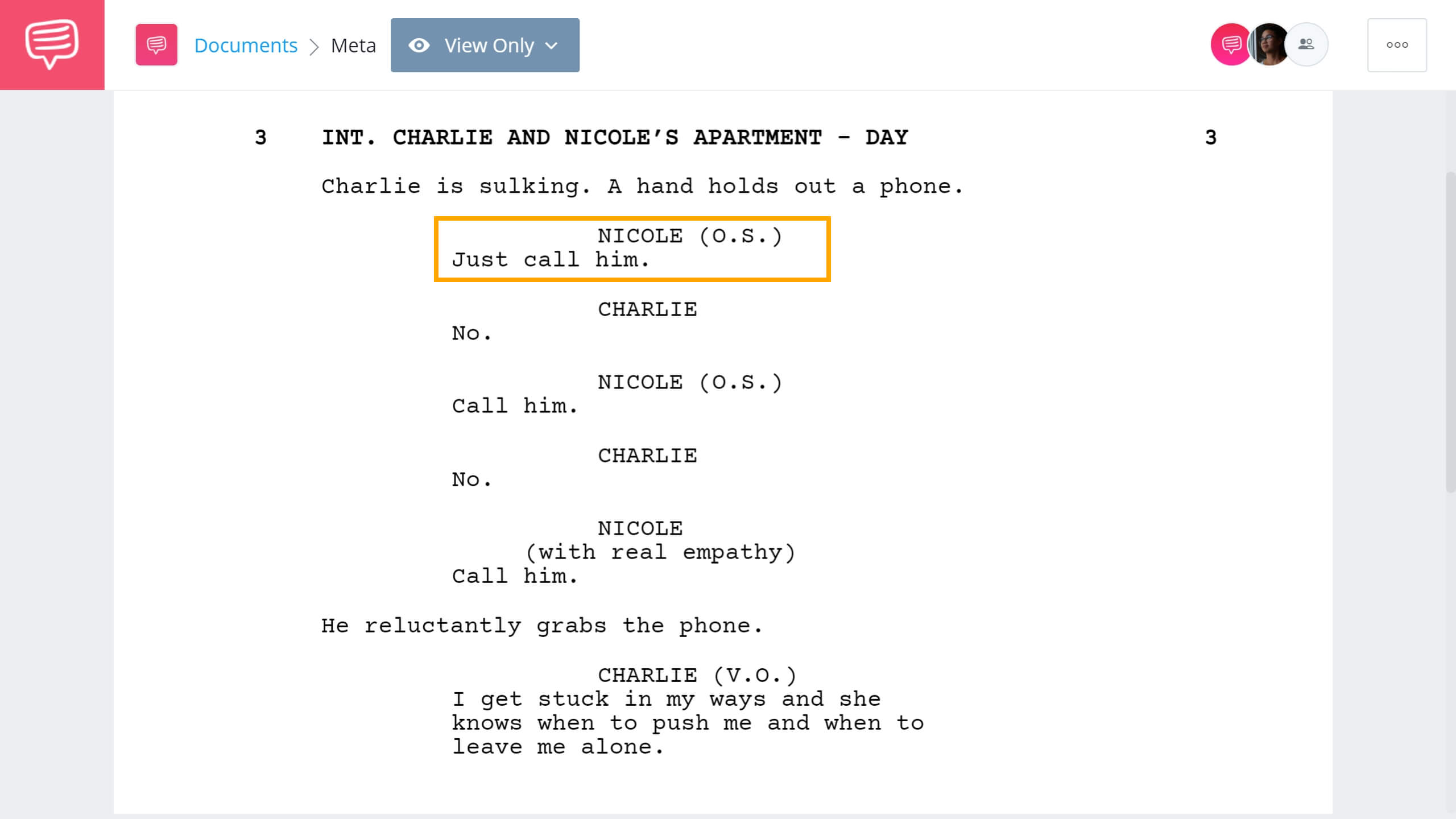

Screenwriting Terms PDF • (O.S.) Examples in ‘Marriage Story’
Script Terms and Abbreviations
Script Doctor
A script doctor is somebody who specializes in patching up scripts. Script doctors aren’t credited as writers unless they meet the 33% WGA threshold. Many screenwriters serve as script doctors at some point in their careers.
Script Vocabulary Explained
Spec Script
A spec script is film-industry slang for “speculative screenplay” – which is simply an uncommissioned screenplay. Oftentimes, spec scripts take existing intellectual properties and “revive” them with a new story.
This video offers some insightful tips for writing spec scripts.
Script Writing Lingo • Tips for Writing a Spec Script
Script Vocabulary Explained
Shooting Script
A shooting script is a late-stage draft of a script that’s been marked up by directors, cinematographers, etc. for production.
This video from Word Dancer breaks down the differences between shooting scripts and spec scripts in detail:
Script Vocabulary • Shooting Script vs. Spec Script via Word Dancer
Screenplay Terms and Abbreviations
(V.O.)
(V.O.) refers to voiceover; or when any character narrates over actions. Most of the time, (V.O.) comments on thematic beats rather than what’s literally happening in any given moment.
This iconic (V.O.) example is taken from one of Martin Scorsese’s best movies: The Departed. ~Graphic content warning~
Screenplay Abbreviations • Voiceover in The Departed
Script Terms and Abbreviations
Shooting script terms explained
Now that we’ve reviewed some common screenwriting terms that writers typically encounter, let’s go over shooting script terms! Again, these terms are typically but not always applied during the Pre-Production process to detail camera work, special effects, editing choices that are being planned.
Script Writing Terms
Crawl
A crawl is when text is superimposed onto a moving image, and moved slowly up or down. Crawls are used at the beginning of nearly every Star Wars show/movie.
Here’s an iconic example of a TITLE CRAWL in George Lucas’s Star Wars:
Script Vocabulary • Crawl Examples in Star Wars
Script Writing Lingo
Credits or Roll Credits
Movie opening credits and title sequences don’t have to be written into the script, but if they are, they should be prefaced with CREDITS, ROLL CREDITS: or TITLE.
Check out our video on “what makes a great title sequence” below:
Reacting to Opening Credits • What Makes a Great Title Sequence? • Subscribe on YouTube
Script Writing Terms
Cut To:
The term “CUT TO” is used when a director wants to cut from one shot to another. “CUT TO’s” are generally used sparingly in comedies and dramas, but more frequently in action movies.
Read "How to Write Quick Cuts in a Screenplay" where you'll find detailed insights on when and how to strategically use "CUT TO" in your script, whether you're crafting a gripping action sequence or building tension in a dramatic scene.
Here’s an example of a “CUT TO” from the Inception screenplay:
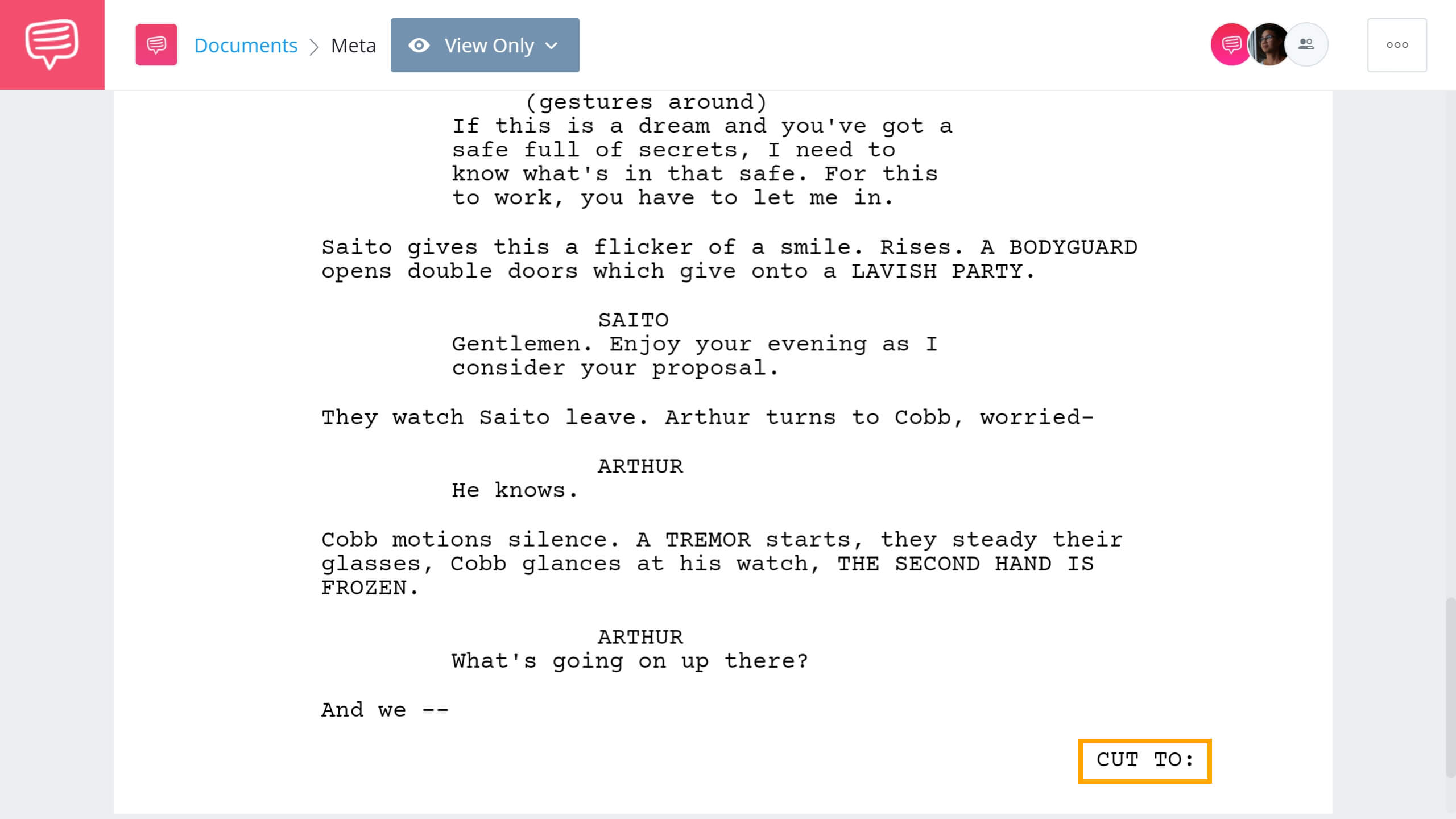

Screenwriting Terms PDF • CUT TO: Example in ‘Inception’
Script Writing Terms
Dissolve
A DISSOLVE is a transition technique that seamlessly dissolves one scene into another. Dissolves were popularized by Welles in the 1940s.
Here’s an example of a dissolve from one of Orson Welles’s best movies: Citizen Kane:
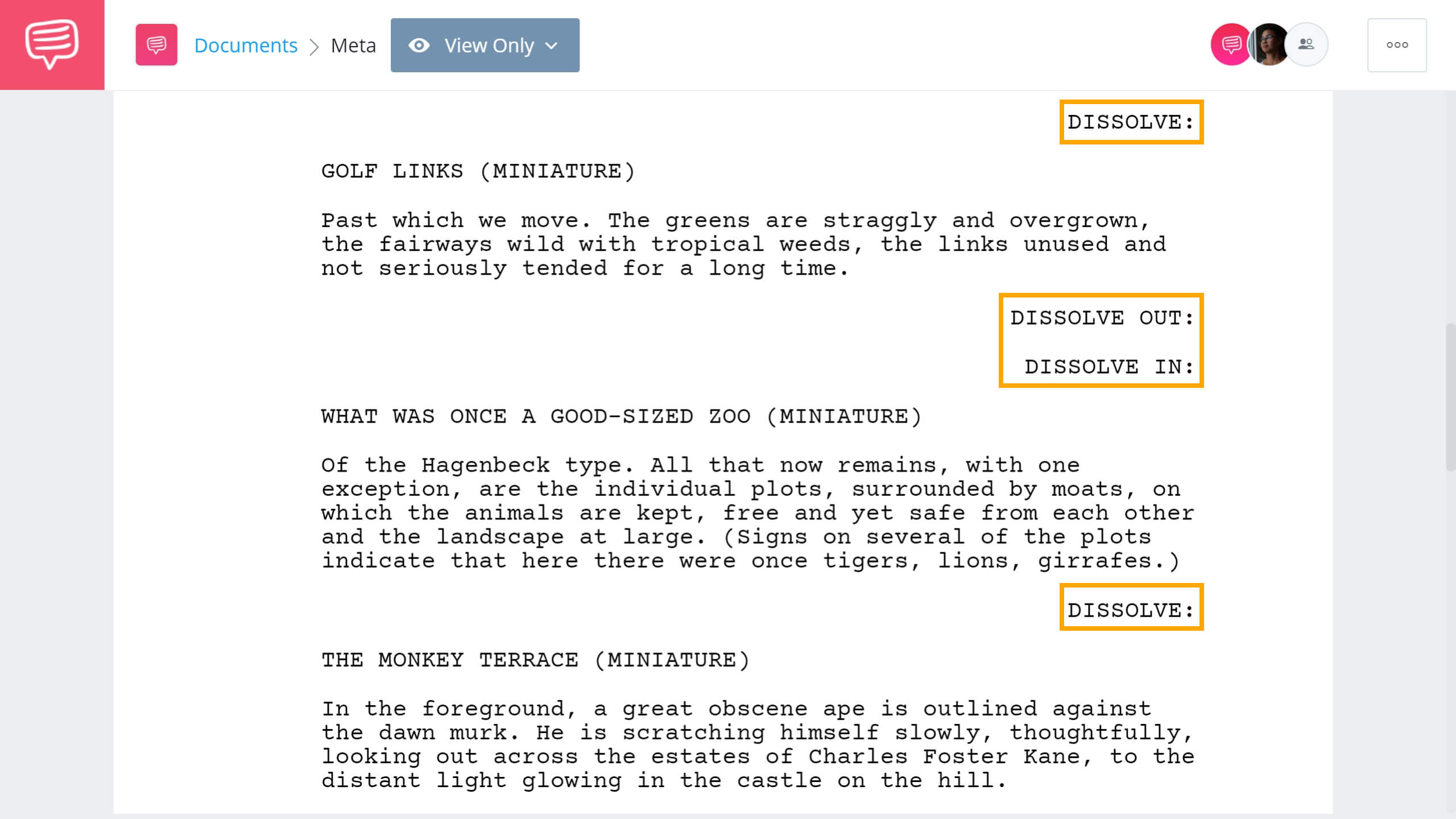

Script Vocabulary • DISSOLVE Examples in ‘Citizen Kane’
Script Writing Lingo
Fade in / Fade out
A FADE is a transition that is almost exclusively used to mark the beginning and end of a script. Sometimes screenwriters use FADE TO BLACK or FADE FROM BLACK instead of simply FADE IN or FADE OUT.
If you're looking to master the art of incorporating text on a black screen, check out our blog post titled 'How to Write Text on a Black Screen,' where you'll learn creative techniques to enhance your screenplay's visual impact.
Here’s an example of a FADE OUT from Casablanca script:
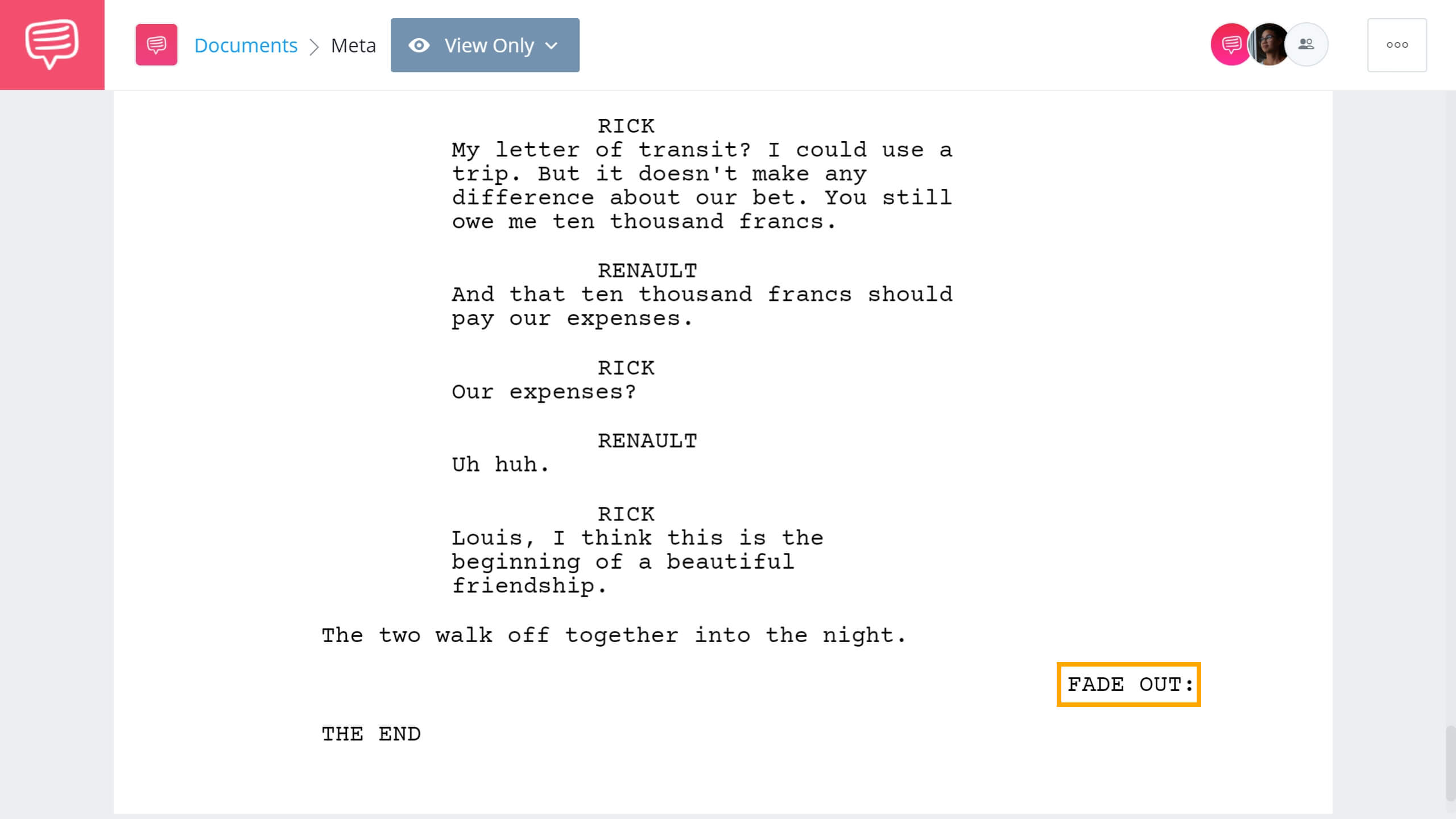

Screenwriting Language • FADE OUT Examples in ‘Casablanca’
Terms in Screenwriting
Insert
An “insert cut” or an “insert shot” is when a specific shot (usually a close-up) is inserted into a scene for emphasis.
Here’s an example of an insert cut in The Prestige:
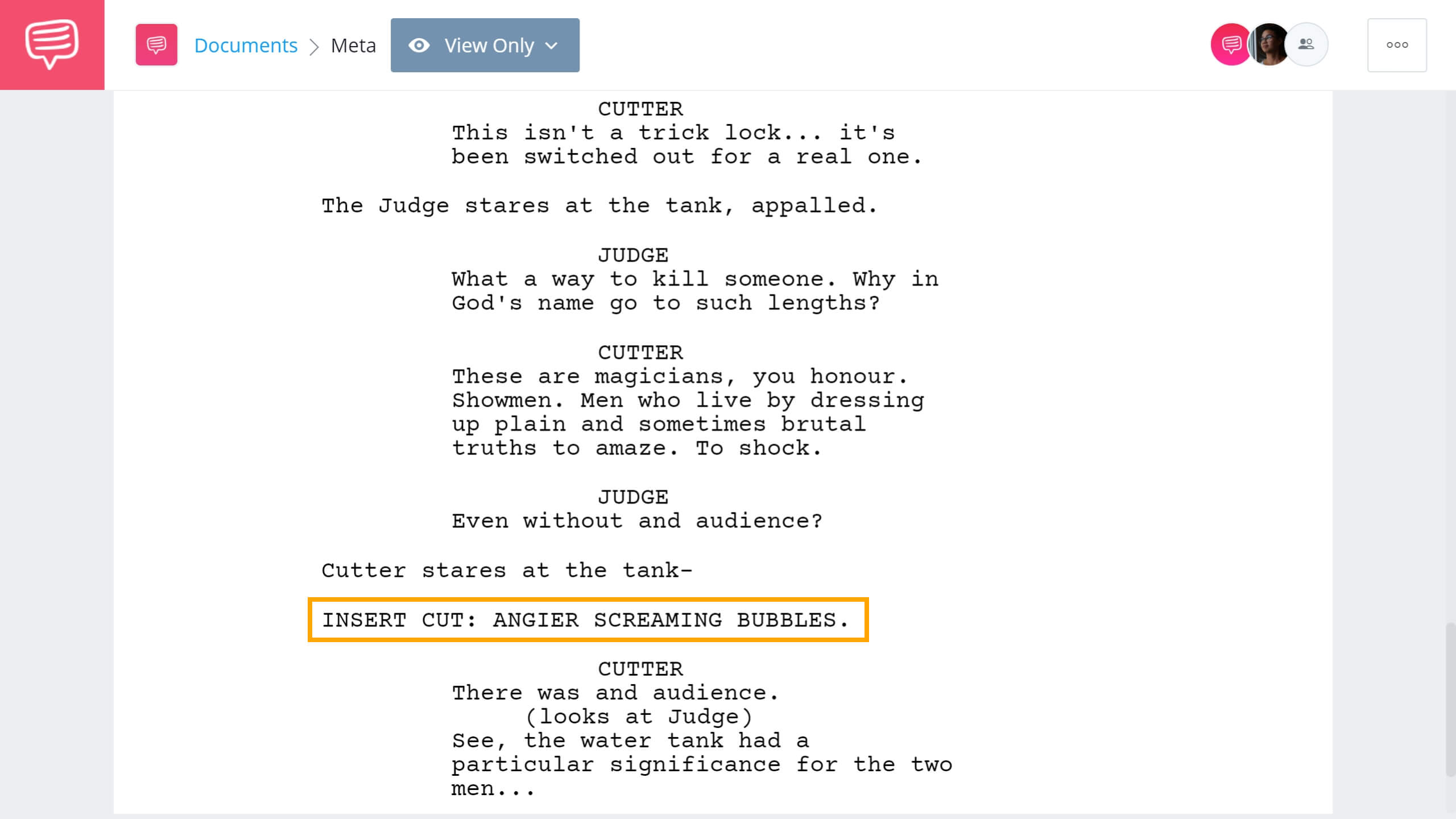

Script Vocabulary • INSERT Examples in ‘The Prestige’
Script Writing Lingo
Montage
A montage is a series of shots that are cut together to create tone. Montages are often used to communicate a sense of scale or emotional depth. Montages are often written into shooting scripts to remind key members of the production about the intended final pace.
For comprehensive guidance on effectively incorporating montages and other shot descriptions into your screenplay, delve into our blog post titled 'How to Write Shots in a Script'.
Watch this video on how Christopher Nolan elevates movie montages:
Screenwriting Language • How Christopher Nolan Elevates the Movie Montage • Subscribe on YouTube
Script Writing Abbreviations
POV (Point of View)
When we see POV in a script, it usually means that the camera is meant to substitute for the first-person point of view of a character. However, there are times when POV is used colloquially – for example a script may say “it looked bad from so-and-so’s POV.”
Both interpretations of the term are determined by context. Check out our video essay on POV shots below:
The POV Shot • The Art of the Subjective Camera and ‘Point of View’ Shot • Subscribe on YouTube
Screenplay Abbreviations List
Super or Superimpose
A super is a line in a script that implies text should be “superimposed” onto a shot to communicate something (usually setting).
This “SUPER” example from The Disaster Artist tells us that the setting of the scene is “San Francisco, July 1998.”
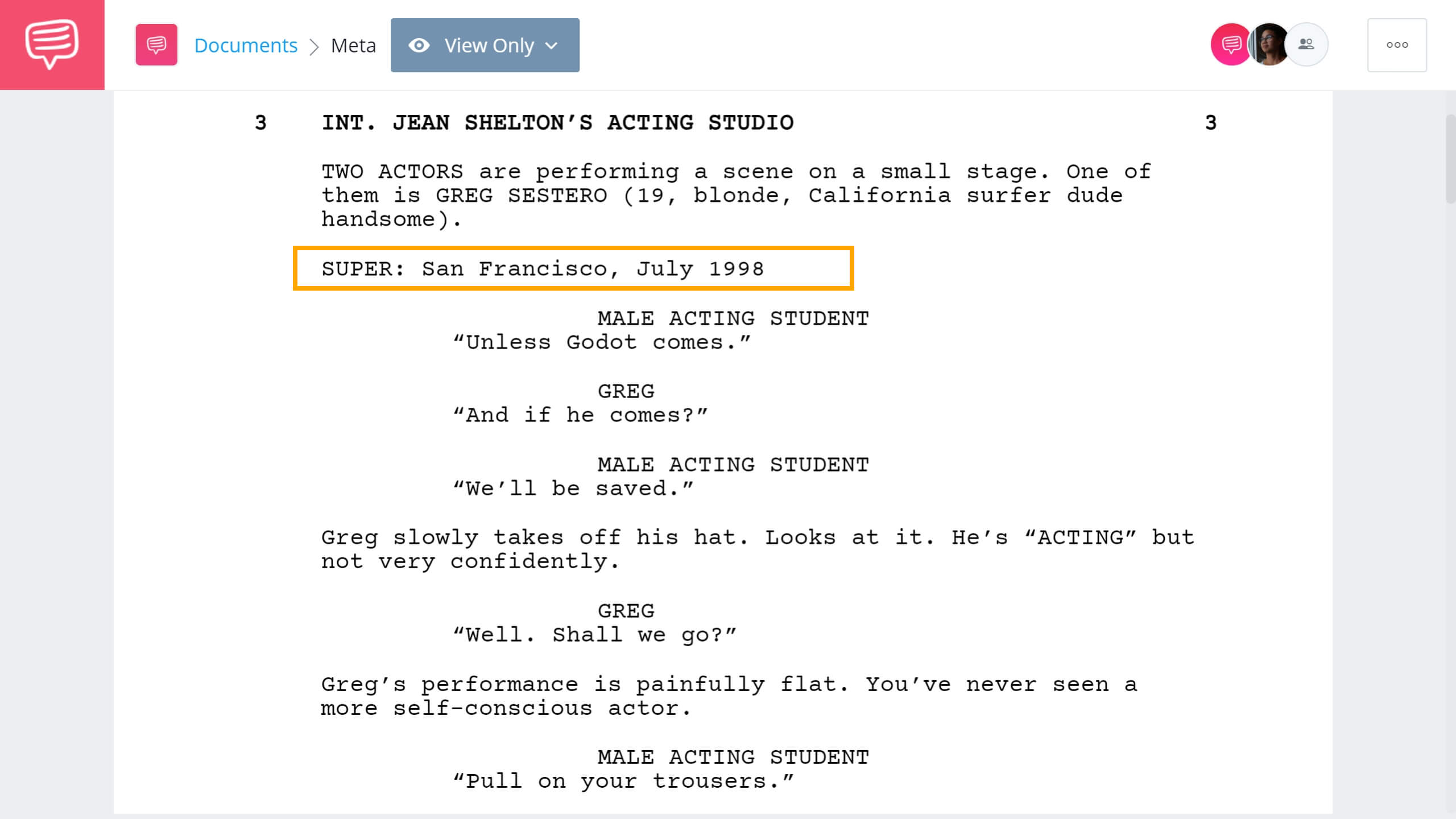

Screenwriting Language • SUPER Example in ‘The Disaster Artist’
Related Posts
UP NEXT
Ultimate Guide to Film Terms
Now that we’ve covered most of the “screenwriting-centric terms,” let’s broaden the scope to encompass all of cinema. In this next article, we break down just about every film term imaginable. By the end, you’ll know your captions from your characters and your snubs from your spaghetti westerns.

